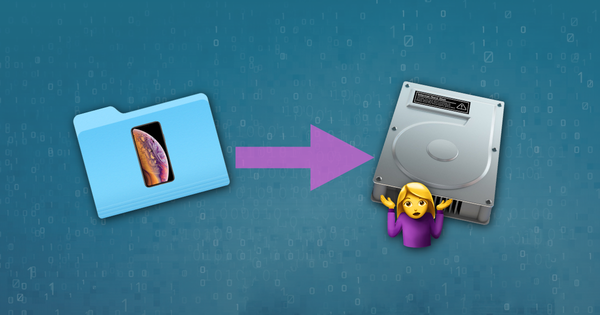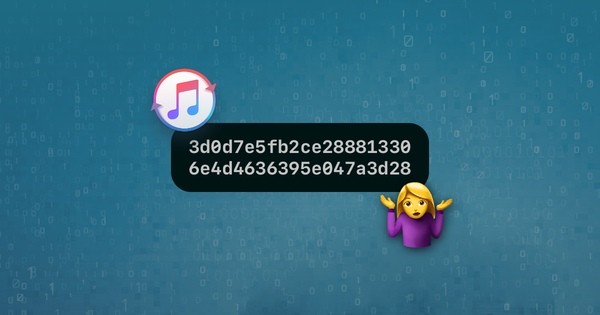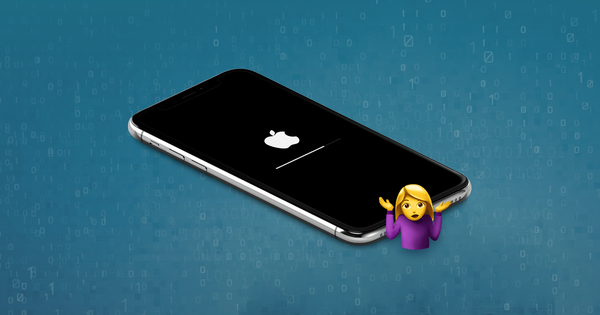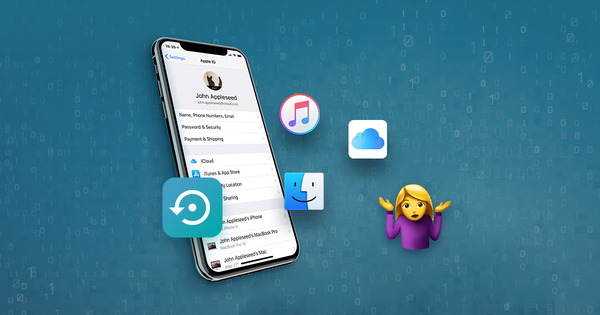iTunesのバックアップ場所を変更する方法

iTunesのデフォルトのバックアップ場所はPCまたはMacのプライマリディスクに設定されており、macOS 10.15では、Finderによって作成されたiOSバックアップは同じ場所に保存されます。多くのユーザーは大規模なバックアップや多数のiOSデバイスからのバックアップを持っているため、結果的にディスク容量が少なくなっています。
iTunesが予備のハードディスク、または外付けHDDまたはNASにバックアップするようにコンピュータを設定することができます。
簡単に言うと、これはiTunesのバックアップフォルダを目的の場所へのシンボリックリンクに置き換えることによって行われます。これは簡単に元に戻すことができる変更なので、デフォルトのバックアップ場所を元のディレクトリに復元することが可能です。
iTunesのバックアップの場所が常に使用できないボリュームに変更された場合、新しい場所が使用できないとiTunesのバックアッププロセスは失敗します。
必要なもの
コンピュータのデフォルトのiTunesバックアップの場所を変更するには、次のものが必要です。
- PCまたはMacで中程度の能力
- 10分
- 目的の新しいバックアップ場所のパスについての理解
- macOS 10.7以降を実行しているMac、またはWindows Vista以降を実行しているPC
- Reincubateサポートチームが手助けをしてくれるので、これを行う方法について顧客にアドバイスできます。
iTunesのiOSバックアップフォルダを自動的に変更する
iPhone Backup Extractorの無料版は自動的にあなたのコンピュータのデフォルトのiTunesのバックアップ場所を示します - そしてそれを変更させます。
- iPhone Backup Extractorをダウンロードしてインストールします。
- メインメニューから「
Preferences」を選択します - 選択する
BackupsからPreferences窓![バックアップの場所を示す[設定]ペイン The "Preferences" pane showing backup locations]()
バックアップの場所を示す[設定]ペイン - 「
Changeボタンをクリックして、iTunesのデフォルトのバックアップフォルダを変更するプロセスを開始します。
WindowsのiTunes iOSバックアップフォルダを手動で変更する
- Open the default Backup location in Explorer using the Windows Run command. Press
⊞ Win+Rand the Run window should appear. For Windows 7, 8 and Windows 10 iTunes Apple version, enter%APPDATA%\Apple Computer\MobileSyncand press⏎ Enter. For iTunes Microsoft Store version, enter\Users\[USERNAME]\Apple\MobileSync\Backup, where[USERNAME]is your Windows user name. - 開いたエクスプローラウィンドウに "Backup"という名前のフォルダが表示されます。これには、コンピュータにすでに存在するすべてのiTunesバックアップが含まれています。バックアップフォルダの場所を変更するには、このフォルダの名前を変更、移動、または削除する必要があります。例として、それを "Backup(Old)"に名前を変更することができます。
- "Backup"フォルダの名前を変更、移動、または削除すると、目的のバックアップ場所へのシンボリックリンクを作成できます。これを行うには、コマンドウィンドウを開く必要があります。最近開いた
MobileSyncエクスプローラウィンドウで⇧ Shift右クリックすると、ユーザはオプション「コマンドウィンドウをここで開く」または「PowerShellウィンドウをここで開く」というオプションが表示されます。それをクリックしてください。 - 次のコマンドを使用してください
mklink /d Backup "[desired-new-backup-path]"。このコマンドを入力したら、⏎ Enterを押すと変更が完了します。 - Windowsの再起動後、iTunesはバックアップを新しい場所に保存します。
macOSのiTunes iOSバックアップフォルダを手動で変更する
- macOSターミナルアプリケーションを起動します。これはFinderの
Applications / Utilities / Terminalます。あるいは、⌘ Cmd+を押してSpotlightを使って起動することもできます。⏎ Enter押す前に「Terminal」と入力します。 -
cd ~/Library/Application\ Support/MobileSyncと⏎ Enter押して、デフォルトのiTunesバックアップの場所に変更するように指示します。 -
open .入力して、Finderの現在のバックアップフォルダを表示しますopen .次に⏎ Enterを押します。 - 開いたFinderウィンドウに "Backup"という名前のフォルダが表示されます。これには、コンピュータにすでに存在するすべてのiTunesバックアップが含まれています。バックアップフォルダの場所を変更するには、このフォルダの名前を変更、移動、または削除する必要があります。例として、それを "Backup(Old)"に名前を変更することができます。
- "Backup"フォルダの名前を変更、移動、または削除すると、目的のバックアップ場所へのシンボリックリンクを作成できます。次のコマンドを使用します
ln -s [desired-new-backup-path] ~/Library/Application\ Support/MobileSync/Backupこのコマンドを入力したら、⏎ Enterを押すと変更が完了します。 - Macの再起動後、iTunesはバックアップを新しい場所に保存します。
iTunesのバックアップフォルダを元の場所に復元する方法
上記の手順を実行して、変更を元に戻したい場合は、プロセスは簡単です。
- iTunesバックアップフォルダーを参照します 。
- そこに表示される
Backupシンボリックリンクを削除します。 - 元の
Backupフォルダーをドラッグして戻し、必要に応じて元の名前と一致するように名前を変更します。
その他の課題
iTunesのバックアップフォルダをドラッグするだけで別の場所に移動したユーザーもいますが、iTunesがバックアップを見るために必要なシンボリックリンクがないのです。
これを解決するのは簡単です、そして2つのオプションがあります:
フォルダを元の場所にドラッグします。忘れた場合は、
Backupと呼び、~/Library/Application Support/MobileSyncます。それを指すシンボリックリンクを作成します - 上記の説明と同じ方法で。この段階にいるのなら、Terminalを開いてこれをやるべきです:
cd [location of the folder which now has "Backup" in it] ln -s Backup ~/Library/Application\ Support/MobileSync
それはそれと同じくらい簡単であるべきです。
これが不可能な状況はありますか?
この手法は、すべてのMac上で動作しますが、それは以前のWindows 2000のリリースに先立って2000年に建てのWindows PC上で動作しません、Windowsが使用され、デフォルトではFATフォーマットファイルシステムを 、そしてそれらは、シンボリックリンクを作成することができません。それ以降のWindows PCビルドはほぼ確実にNTFSフォーマットのディスクを使用し、これらはシンボリックリンクをサポートしています。 FATを実行しているときにリンクを作成しようとすると、次のエラーが表示Local volumes are required to complete the operation.
幸いなことに、マイクロソフトはディスクをFATからNTFSにアップグレードする方法についていくつかの指示を提供しています 。もう少し技術的ですが、可能です。
![バックアップの場所を示す[設定]ペイン The "Preferences" pane showing backup locations](https://i.reincubate.com/ssm/iphone-backup-extractor-backup-folder-location-preferences.png)





によって Gael
Bonjour,
J'essaie tant bien que mal de déplacer ce Backup et de créer un lien symbolique. Cependant, la seule réponse que j'ai est: illegal option -- /
Je vous laisse le chemin que j'utilise et si une âme charitable veut bien m'aiguiller. Merci :)
ln -s/Volumes/VERBATIM\ HD/SAUVEGARDE\ IPHONE/ ~/Library/Application\ Support/MobileSync/Backup ln: illegal option -- / usage: ln [-Ffhinsv] source_file [target_file] ln [-Ffhinsv] source_file ... target_dir link source_file target_file
で返信: Reincubate Support
Salut Gael, merci d'avoir écrit! Le problème ici est l'espace ("") entre votre chemin et les barres obliques.
Il doit s'agir de
ln -s /Volumes/VERBATIM\ HD/SAUVEGARDE\ IPHONE/ ~ /Library/Application\ Support/MobileSync/Backup, et non deln -s / Volumes / VERBATIM \ HD / SAUVEGARDE \ IPHONE / ~ / Library / Application \ Support / MobileSync / BackupFaites-nous savoir si vous avez besoin d'aide! 🙂
によって Alex
Backing up to remote Synology server (not local). All you need:
thanks
によって Samuel Kwok
Exactly what I needed. I don't want to store on my MacBook as it takes 200GB. This allows me to move to a Time Capsule. I don't use Time Machine but I use Time Capsule as a network drive and another copy of the whole Time Capsule to another network drive.
で返信: Reincubate Support
Glad it helped!
によって Rick Galloway
I've got the symbolic link created, but my iPhone back up still goes to the original C: drive location. When I look on my k: drive, I do not see the symbolic link file subdirectory even though it said it was created.
で返信: Reincubate Support
Hi Rick: the symlink should be in your C: drive, in
MobileSync, and calledBackups. It'd be that that points to the K: drive in your case. If you get stuck, why not use the functionality in iPhone Backup Extractor? It can do it for you, and it's in the free edition.によって Colleen Gordon
How do I figure out the my desired new backup location path? I want to use an external drive.
で返信: Reincubate Support
Hi Colleen, thanks for commenting. If you use the functionality in iPhone Backup Extractor to change location, you can make the change simply by browsing to the folder you want. That might be easier! 🙂
によって Mike L.
A fix to the insufficient permissions error--
Since I got the permissions insufficient in both cmd and powershell. First you search
cmdand then right click the command prompt app and run as admin. Navigate to the directory using the cd command ex.(cd c:\users\youruser\apple\mobilesync). once in the directory you can use the (mklink /d backup [new directory]) command listed in the article. That worked for me.As a side note, when using the cd command to navigate remember that you will likely have to put any folders with a space in the name inside quotation marks ex.(
cd c:\users\"this user"\apple\mobilesync). hopefully this helps some avoid the hassle of having to figure out this process if you get that persistent insufficient permissions response.によって Aaron
Hello Aidan!
So I'm trying to change the backup path on Windows, and of course get the "insufficient privilege" error in the regular Powershell. So I ran it as administrator by typing it in the search bar and it said it created the symbolic link to the location, so I restarted my PC & tried updating iOs but the backup still went through to the original location (my hard drive, while I wanna change it to an external one simply 'cause I don't have enough space left on the former, lol).
So I guess my question is: how do I run Powershell in the MobileSync window as admin/how do I get the one I open through the search bar as admin to go to the MobileSync folder location so I can properly create the symbolic link & switch it up? :/
P.S. I did skip step one if I'm being honest, but only did so 'cause I already found the location manually, then proceeded to follow the instructions w/ renaming the folder, etc. Might this be the reason why it's not working? If so, shall I re-rename it to its original "Backup" name and try it again with the 1st step? I doubt it since I can't get the Powershell to go to the MobileSync location while I run it as admin to begin with/can't change it without running it as admin in the aforementioned window...Then again what do I know, lol.
P.P.S. Does the admin-run Powershell not need the MobileSync path to be put in and can successfully render the switcheroo by typing the featured command right after the "system32" path? If so, what seems to be the problem?
I was hoping to update my iOS tonight, and am getting more & more frustrated as we speak. Sorry for the post being so jumbled, hope all's clear. Thanks for the help!
で返信: Reincubate Support
Hi Aaron, thanks for the comment.
Yes, if you skipped step 1 your Powershell will be looking in the wrong folder, so it won't have created the symbolic link in the right place.
If you've already got a Powershell or command window open, you can make it change folder with this command:
cd %APPDATA%\Apple Computer\MobileSync(If it's looking at the wrong drive, you'll have to change drive by typing
C:.)We've reached out to you directly to help, but if anyone else runs into the same problem, we'd recommend undoing the steps you took, starting over, and making sure to include the first step. 🙂
によって Mohamed
I tried it, the following error popped up .. Plz advise
で返信: Reincubate Support
Hi Mohamed, it looks like you're using PowerShell to run the command. If that's the case, you must prefix you command with
cmd /c, so it's likecmd /c mklink, etc.によって Sean
I'm trying to do this on Mac OS 10.14.6 (Mohave), but when I try Step 5, I receive a "Operation Not Permitted" message. Any ideas...?
で返信: Reincubate Support
Hi Sean, thanks for commenting. On macOS Mojave and newer, you'll need to grant "Full Disk Access" to your Terminal in order to make the change. There's a how-to on how to do this for iPhone Backup Extractor here, I hope that helps!
によって Max
Thank you for the article. Here are a few notes to help somebody.
CD(include space). Example:CD C:\Users\Username (change this)\AppData\Roaming\Apple Computer\MobileSyncmklink /d Backup "L:\Users\XYZ"によって Joe
I'm still having trouble with permissions, when I open up powershell in admin I get a command line PS
C:\Windows\System32>I don't seem to be able to open it in admin mode from the file path of the itunes back up.で返信: Reincubate Support
Hey Joe, you can change directory using the
cdcommand. Try this:cd %APPDATA%\Apple Computer\MobileSyncによって Jess
Thanks for this assistance! I too got stuck on the "you do not have sufficient privilege to perform this operation." I then followed your advice in the comments above and ran Powershell as an administrator, but the Powershell window that opens from the MobileSync folder doesn't seem to recognize that and keeps giving me the same message. What do I do from here? Thanks!
で返信: Reincubate Support
Hey Jess, thanks for writing. It's the same privilege error you're getting? If you drop us a note I'm sure we can guide you through it.
によって Андрей
У меня выдает ошибку в PowerShell mklink : Имя "mklink" не распознано как имя командлета, функции, файла сценария или выполняемой программы. Проверьте правильность написания имени, а также наличие и правильность пути, после чего повторите попытку. строка:1 знак:1 + mklink /d Backup "[desired-new-backup-path]" + ~~~~~~ + CategoryInfo : ObjectNotFound: (mklink:String) [], CommandNotFoundException + FullyQualifiedErrorId : CommandNotFoundException
で返信: Reincubate Support
Привет Андрей, попробуй
cmd /c mklinkи так далее 🙂によって Hogan
Hi Aidan, Thanks for your amazing instructions!
I have run them on my Mac but got an error saying "Library/Application Support/MobileSync/Backup: No such file or directory". I guess this happened because I have renamed the old "Backup" file. Actually, it also confuses me a lot when u say "Once the 'Backup' folder has been renamed.../Backup", as the original "Backup" file doesn't exist anymore(right?)
Looking forward to your further clarification. Thanks :)
で返信: Reincubate Support
Hi Hogan, thanks for your kind words. That second "Backup" reference is assuming you didn't change the folder's name, but simply moved it elsewhere. If you did rename it, you'd want to change it in that command. I hope this is clear. If it's not, do drop us a note. (Or use iPhone Backup Extractor to move it for you, as the free version can automate this process.)
によって Luna
hi i get this message when i try and finalize the path: "You do not have sufficient privilege to perform this operation." It's my computer and i understand it has to do with admin rights but how do i run windows powershell as admin?
で返信: Reincubate Support
Hey Luna! No problem: on Windows, you'd click on the "Start" button, then type "powershell". You'll see the menu search eventually shows you the PowerShell icon. If you right-click on that, you'll see there's a "Run as Administrator" option. Good luck -- I've asked our support team to drop you an email directly in case you need further help. 🙂
によって Cedric koh
If I were to delete the backup symlink in the itunes MobileSync folder,how will that affect the backup folder i used for the symlink in my other drive? Will the files inside the backup folder in my other drive be unusable?
で返信: Reincubate Support
Hi, thanks for stopping by. Removing the symlink is safe: it will effectively just remove the pointer to the backup folder on your other drive. The files will still be usable, but iTunes (or Finder) won't know where to look for them.
You could then move the files back to where they were originally -- or create another symlink.
によって PBHRider
Great work. How do you come up with this stuff? Did the manual method on Windows 10 using the command prompt with admin privilges and am now backing up my iphones etc to my NAS drive. Saving about 4Gb on my SSD on my laptop. Thank you.
で返信: Reincubate Support
Really pleased it worked out for you. 👍 Don't be a stranger if you need help in future!
によって Michael Milbourn
You do not have sufficient privilege to perform this operation. It's my computer, who is not letting me change things on it?
で返信: Reincubate Support
Michael -- if you're on a Windows machine, trying running these commands in a Windows Command that has been launched with "Run as Administrator".
によって Lucas
Works like a charm! I followed the instructions for manually changing the iTunes iOS backup folder on Windows (through PowerShell). It is exactly what I was looking for to free up space on my C: drive. Thank you so much Aidan!
で返信: Reincubate Support
Our pleasure, we're glad it helped!
によって Brad
Thank you for this
によって kalveer kaur lehal
Hi thanks for this. I get an error saying:
Local volumes are required to complete the operation.
How can I fix this please? Thanks
で返信: Reincubate Support
Hi Kalveer, this message suggests your filesystem is FAT-based. I've updated the article to include a mention of why it's not possible to create links on FAT. I've also included a link to instructions on upgrading to NTFS. Good luck!
によって Greg
Awesome instructions, thank you! I think there is a typo on step 5 for Mac. The command line is written as
-s [desired-new-backup-path] ~/Library/Application\ Support/MobileSync/Backupbut the folder "Support/MobileSync/Backup" doesn't exist since we moved/deleted it. I had to change it to "Support/MobileSync" and then the folder I linked to was called "Backup".で返信: Reincubate Support
Howdy Greg! Having "Backup" in the path should be correct, as it'll ensure the link that gets created is called "Backup". Makes sense?
We've got something up our sleeves to make this a little easier in future. Keep an eye on the release notes. 😏
によって salma
hi ! i did all the steps but i kinda don't get where is the new backup location now ?
で返信: Reincubate Support
Hi Salma -- the new location will be the folder you created the link to!
によって Clint
Firstly Aidan - thank you very much for this.
My main drive is a (relatively) small SSD and I would like to be able to save my iTunes backups to the NAS setup instead. You have provided a fantastic workaround!
One thing I wasn't sure about was at step 3 (Windows) - when you right-click (to choose "Open PowerShell window here"), is that in the Explorer window of the now renamed Backup folder? Eg, in the now-named "BackupOld" folder window?
で返信: Reincubate Support
Hi Clint, thanks for your kind words. I've updated the article to make it crystal clear: the window you right-click in is the one you opened at
%APPDATA%\Apple Computer\MobileSync.によって Hugues Larouche
And how do you reverse it on Windows PC ? Thx
で返信: Reincubate Support
Hugues, thanks for your comment. I've updated the article to explain that!
によって Fred Brunson
Aidan, I don't understand your instructions in How to change the iTunes backup location. What do you mean by prefix your command in PowerShell with cmd /c, like mklink /J Backup "[desired-new-backup-path]".
で返信: Reincubate Support
Hey Fred, thanks for asking. Just like this:
I'll tweak the explanatory text to make it clearer.